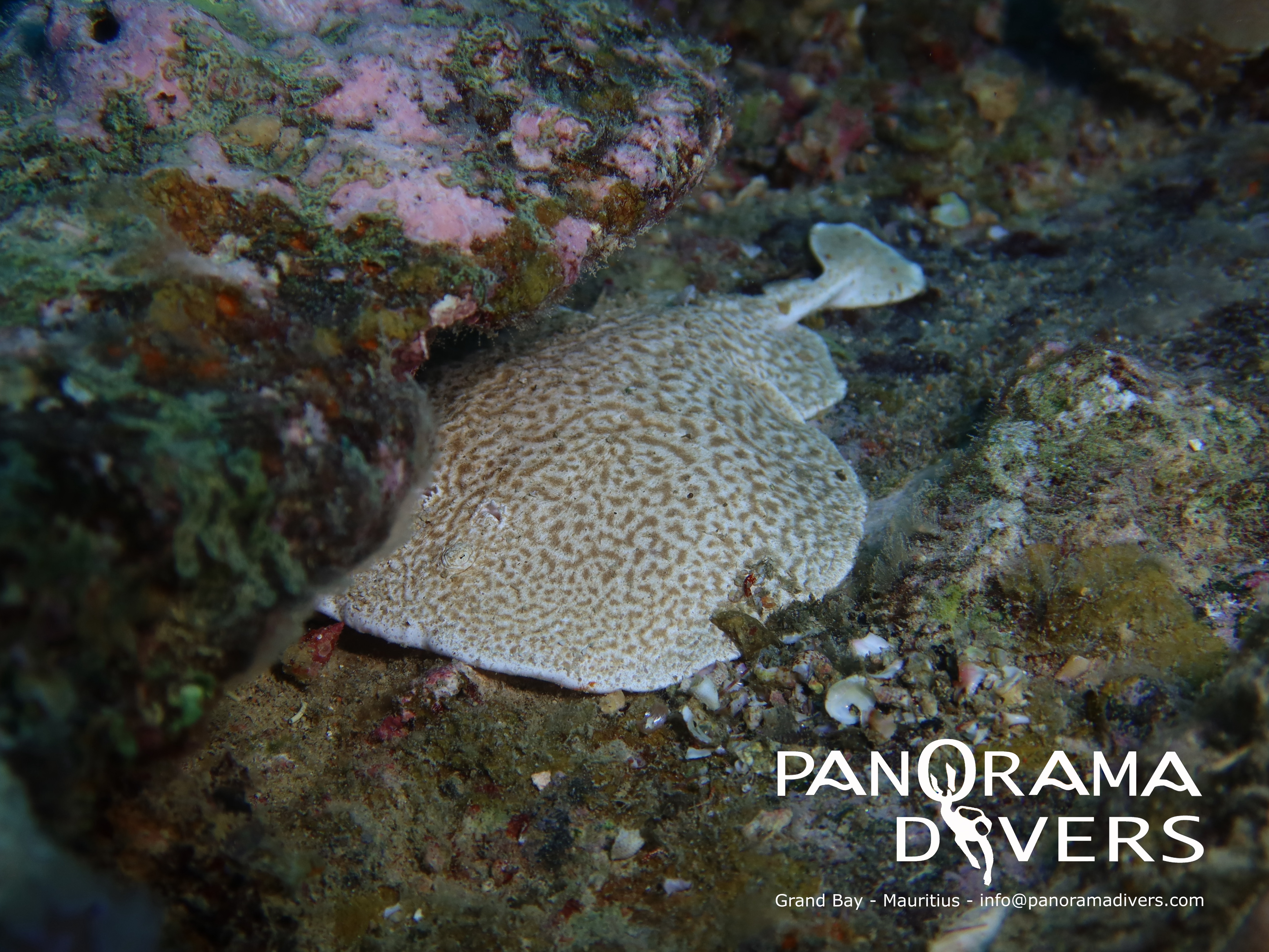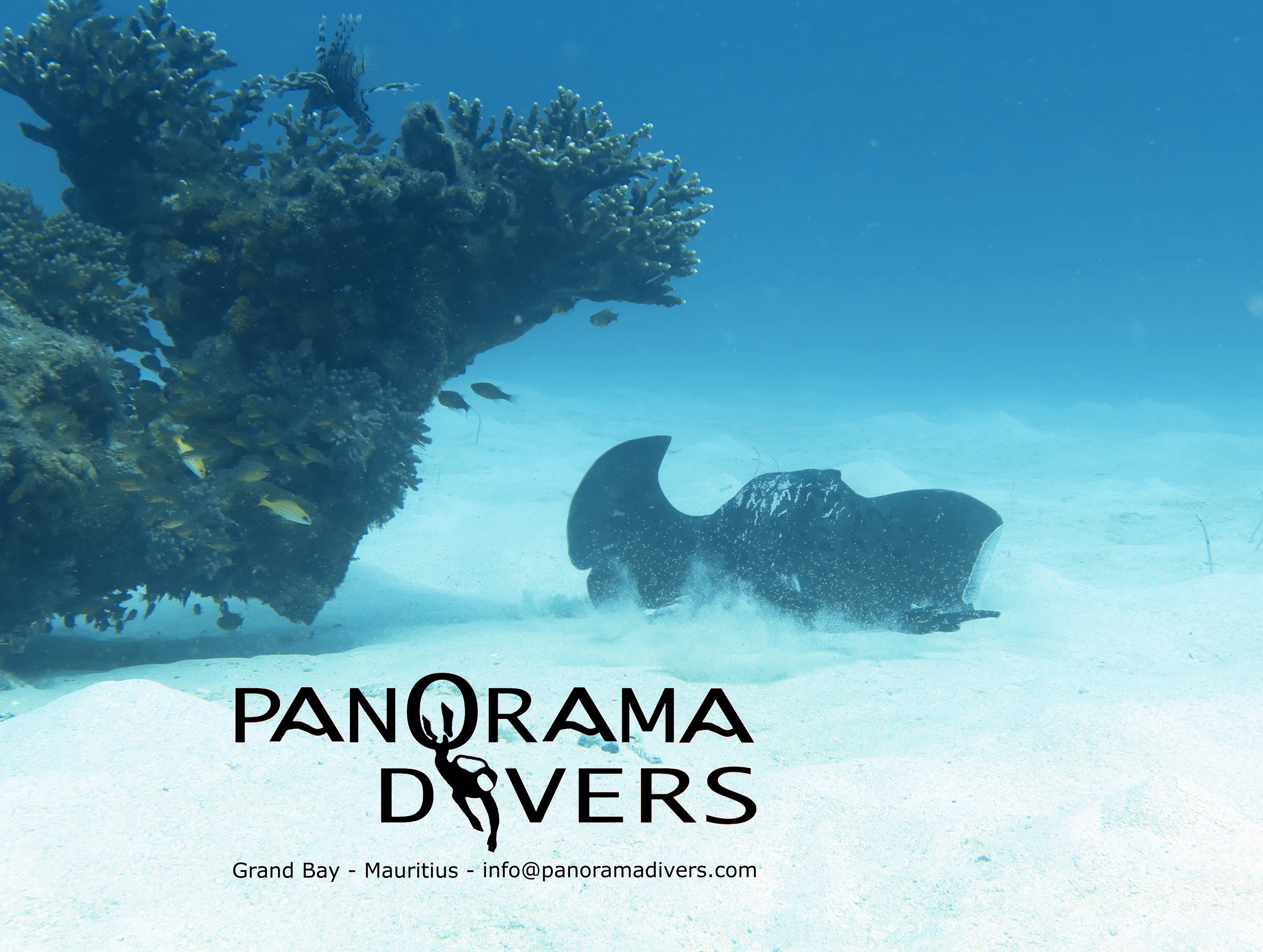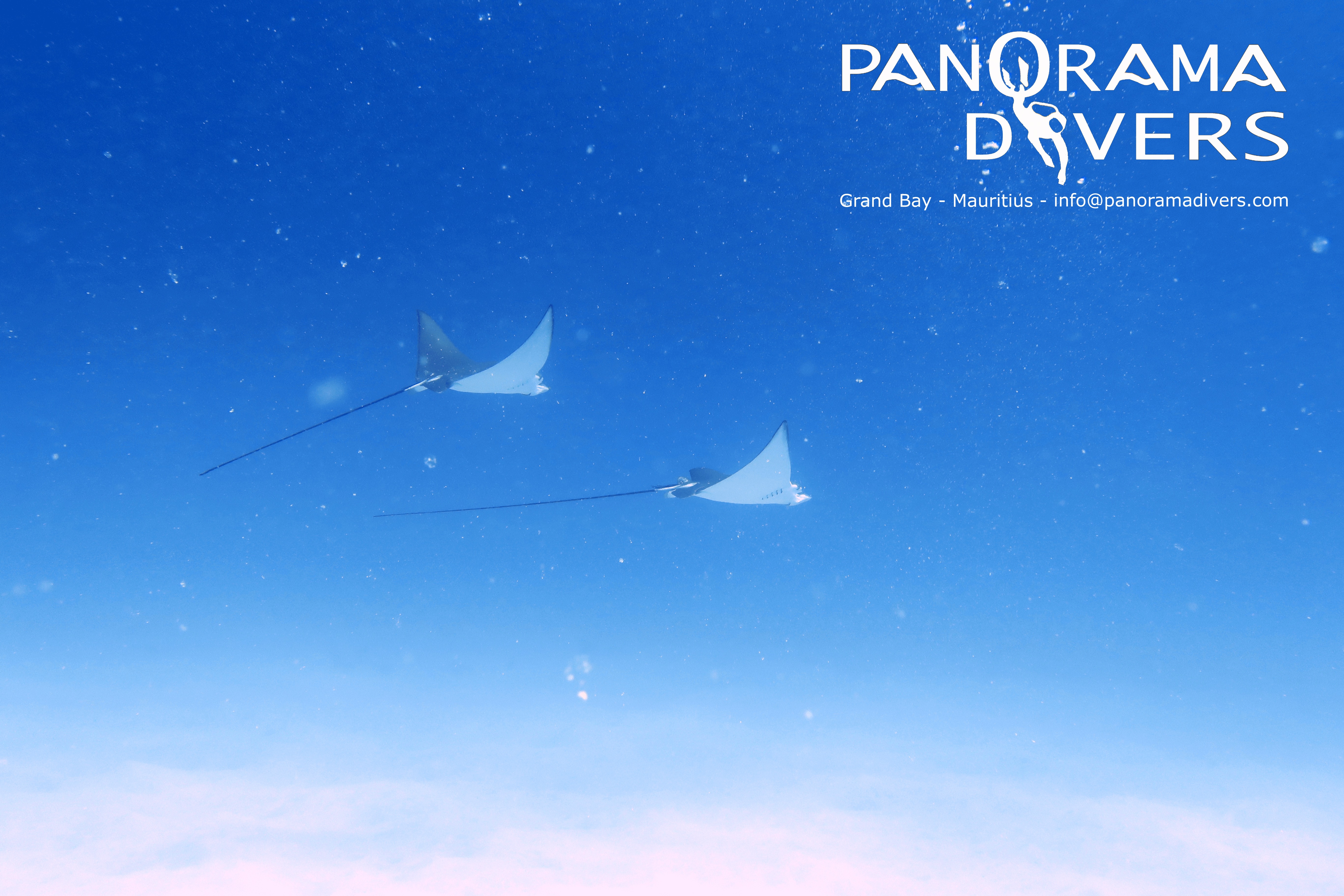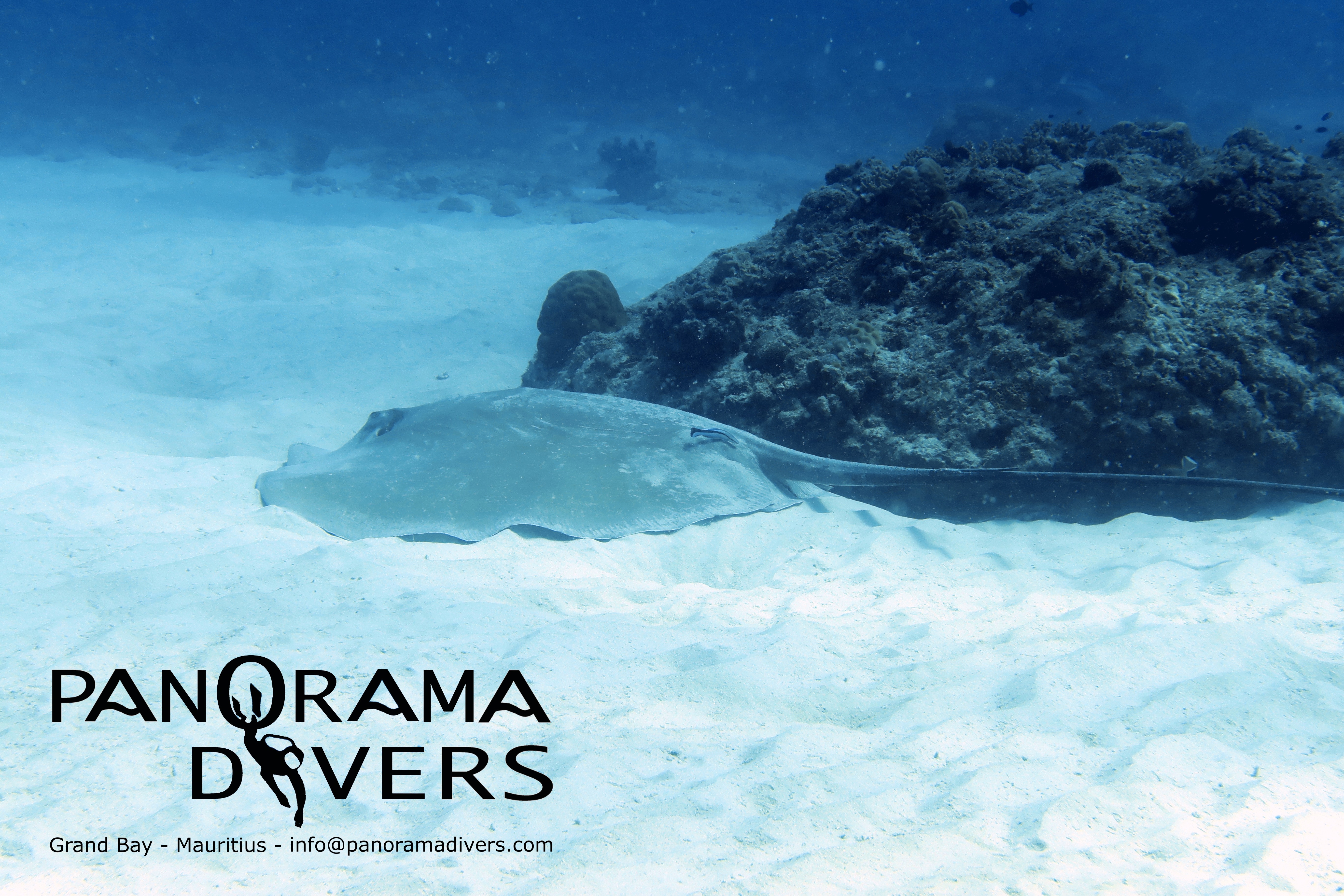Diving into the depths: Enchanting encounters with rays in Mauritius
- da Cindy
-
in Blog
-
Visite: 91
Diving into the depths: Enchanting encounters with rays in Mauritius
Explore the fascinating world of rays in the crystal-clear waters of Mauritius! From the majestic torpedo ray to the graceful eagle ray, dive with us to discover these amazing creatures. Get ready to be amazed by the beauty of the Indian Ocean and learn more about these fascinating inhabitants of the depths. Join us for an unforgettable underwater adventure in Mauritius!
Introduction
Mauritius, a jewel in the Indian Ocean, not only boasts crystal-clear waters and breathtaking coral reefs but is also home to a rich diversity of marine life. For those who venture beneath the surface, the encounter with rays is nothing short of enchanting. In this exploration, we unveil the captivating traits of five remarkable ray species found in the Mauritian waters— the black-spotted torpedo ray, the blackspotted ribbon tail ray, the eagle ray, the giant guitarfish, and the atlantic stingray. Join us as we navigate the depths to discover the habitats, diets, sizes, predators, fun facts, and the allure that each of these rays brings to the underwater realm.
Species Descriptions:
1. The black-spotted torpedo ray (Torpedo fuscomaculata):
- Habitat: Known for being capable of generating an electric shock, torpedo rays are often found in sandy or muddy areas near coral reefs and rocky outcrops.
- Diet: They primarily feed on fish, using their electric shocks not only for self-defense but also to immobilize prey.
- Size: With a wingspan of around 90 centimeters, these rays are a discreet presence in the underwater landscape.
- Predators: Larger fish and sharks are among their main predators, but their electric defense mechanism helps deter potential threats.

2. The blackspotted ribbontail ray (Taeniura meyeni):
- Habitat: Inhabiting coral-rich areas and sandy bottoms, blackspotted ribbontail rays are commonly found in the shallow lagoons and coastal reefs of Mauritius.
- Diet: Their diet consists of crustaceans, small fish, and mollusks, skillfully uncovered by flapping their wings to expose hidden prey.
- Size: These rays typically measure between 100 cm to 160 cm in width, showcasing their compact and elegant form.
- Predators: While adult blackspotted ribbontail rays have fewer natural predators, sharks and larger fish may pose a threat to their pups.

3. The eagle ray (Pteromylaeus bovinus):
- Habitat: Eagle rays prefer deeper waters but can be spotted near coral reefs and sandy bottoms, making them a delightful sight for divers exploring the drop-offs.
- Diet: Their diet includes small fish, crustaceans, and bivalves, showcasing a varied palate in the underwater buffet.
- Size: With a wingspan of up to 3 meters, these rays captivate attention with their impressive size and graceful presence.
- Predators: Larger sharks and, occasionally, killer whales are among their potential predators.

4. The giant guitarfish (Rhynchobatus djiddensis):
- Habitat: Giant guitarfish rays are commonly found in shallow coastal waters, estuaries, and sandy or muddy bottoms, where they use their unique snouts to uncover prey.
- Diet: Their diet includes benthic invertebrates, small fish, and crustaceans, showcasing their adaptability to various food sources.
- Size: With a wingspan of up to 2.5 meters, these rays are easily recognizable by their distinctive duckbill-like snouts.
- Predators: Larger sharks and, occasionally, larger rays may pose a threat to the giant guitarfish
5. The atlantic stingray (Dasyatis pastinica):
- Habitat: Atlantic stingrays inhabit sandy or muddy bottoms, often near coral reefs or seagrass beds, providing them with ample opportunities for feeding and protection.
- Diet: Their diet consists mainly of benthic invertebrates, small fish, and crustaceans, which they detect using electroreception.
- Size: With a wingspan of up to 1.5 meters, these rays showcase a streamlined and efficient design for navigating the ocean floor.
- Predators: Larger sharks and, occasionally, larger rays are potential predators of the Atlantic stingray.

Fun Facts:
- Did you know that torpedo rays can generate electric shocks of up to 200 volts to stun prey and deter predators?
- Blackspotted ribbontail rays are not only adept hunters but also skilled camouflagers, using their coloration to blend seamlessly with the sandy ocean floor.
- While lacking ocelli-like markings on their wings, the eagle rays in Mauritius exhibit unique characteristics that serve as identifiers for individuals within the species.
- The atlantic stingray possesses specialized electroreceptors called ampullae of Lorenzini, allowing them to detect the electric fields produced by nearby prey.
- Giant guitarfishes have a distinct feeding technique called "punting," where they use their snouts to lift the sand and uncover buried prey.
Conclusion:
Mauritius, with its azure waters and thriving marine ecosystems, offers a front-row seat to the mesmerizing world of rays. Each species, from the electric torpedo ray to the surprising giant guitarfish, contributes to the vibrant tapestry of the ocean. Divers exploring the waters of Mauritius are not just treated to a visual spectacle but also an opportunity to witness the delicate balance and intricacies of marine life. As we celebrate the diversity and wonder of these rays, may our appreciation for the underwater realm deepen, inspiring conservation efforts to ensure the continued thriving of these majestic creatures in the embrace of the Indian Ocean. Dive in, explore, and let the enchantment of Mauritius's rays leave an indelible mark on your underwater adventures.
Comments
- No comments found




Leave your comments